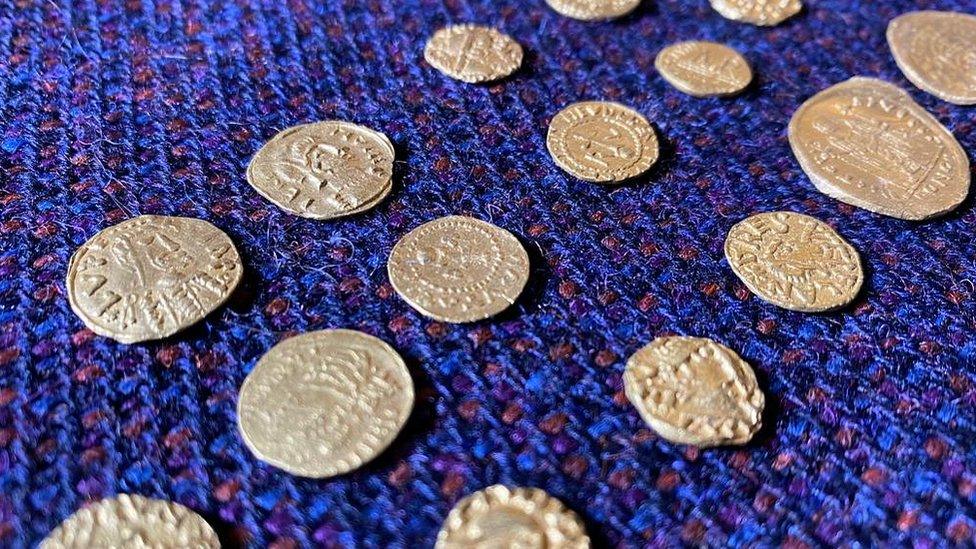Malmesbury Roman coin hoard set to go on display
- Published
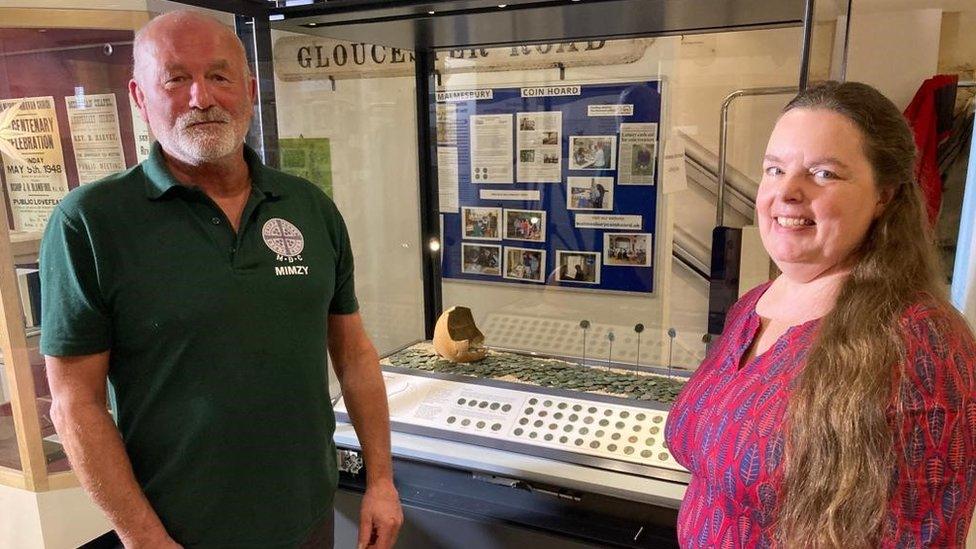
Mimzy, (pictured left) who discovered the coins, and Athelstan Museum's Maria Marsh with the display
A hoard of 1,266 Roman coins discovered in Wiltshire 10 years ago is going on display.
The coins, dating from the Fourth Century, were found by a metal detectorist in a field in Malmesbury.
They will go on display from 8 April at the Athelstan Museum in Malmesbury, which used fundraising and grants to acquire and conserve the coins.
"People can come in and see their hoard. It belongs to the town," said the museum's Maria Marsh.
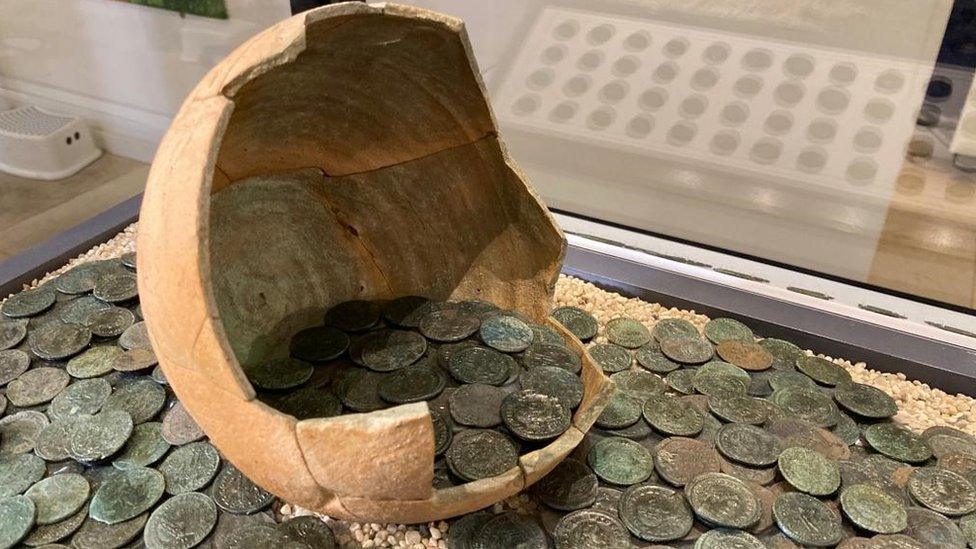
The coins will be shown along with the pot they were found in
The collection of coins, dating from 286AD to 317AD, was found in a pot by metal detectorist Mimzy in 2012.
"I got my trowel out and dug down into the clay and eventually found the top of a broken pot," he said.
"I removed the soil and the clay to open up the hole so I could get a better look and eventually discovered that it was a broken pot with a lot of coins scattered underneath it.
"We didn't know the amount that was in there but I had a good idea that it was going to be over 1,000 coins," he added.
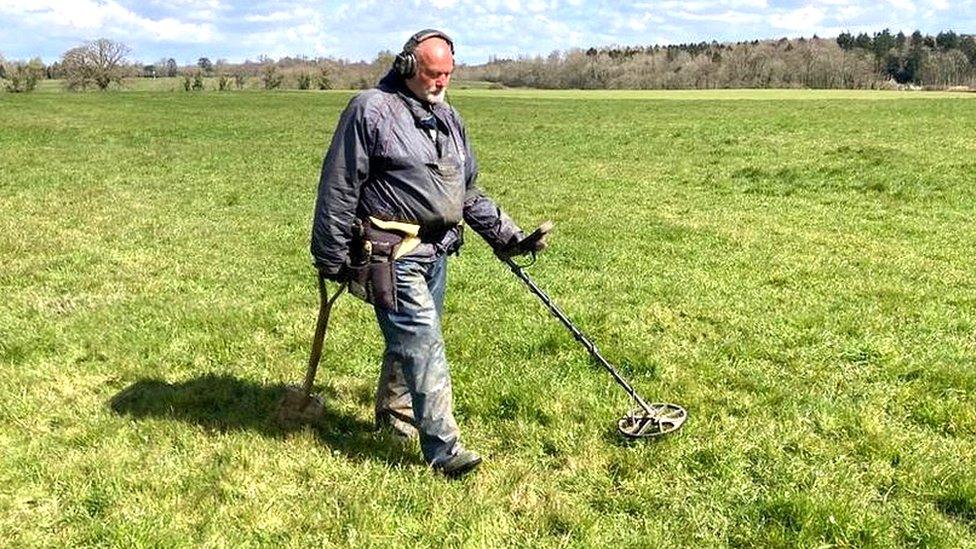
Army veteran and retired HGV driver Mimzy found the coins in a field in Malmesbury in 2012
The Athelstan Museum received grant money from groups including the Heritage Lottery Fund, along with local donations and fundraising to keep the hoard in the town and get it ready to go on display.
The copper-alloy coins span a period of 20 years, carry the faces of a number of Roman emperors and were minted in eight cities across Croatia, Italy, France, Germany and England.
Much of the work to conserve, record and research the hoard has been carried out by volunteers including lead project volunteer Ms Marsh.
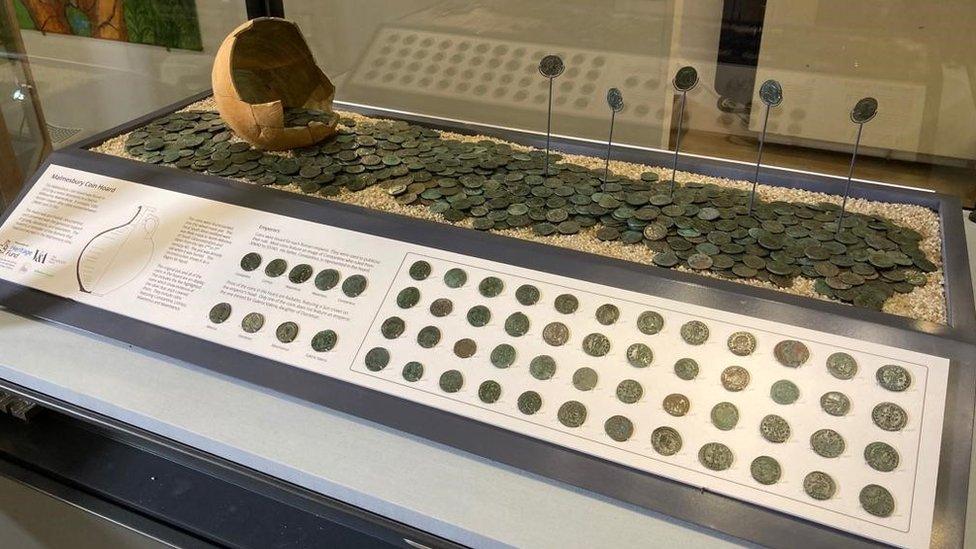
Grant money and fundraising allowed the Athelstan Museum to purchase the coin hoard and keep it in Malmesbury
She said they were not sure why the coins ended up in the ground but it could have been a religious offering.
"It's very close to Cirencester so maybe they came through the market there and maybe the local farmer, whose coin hoard this is, went to Cirencester to purchase his olive oil or wine.
"It brings history alive for the local community and its part of their Roman history," she added.

Follow BBC West on Facebook, external, Twitter, external and Instagram, external. Send your story ideas to: bristol@bbc.co.uk , external
Related topics
- Published11 January 2022

- Published26 November 2021
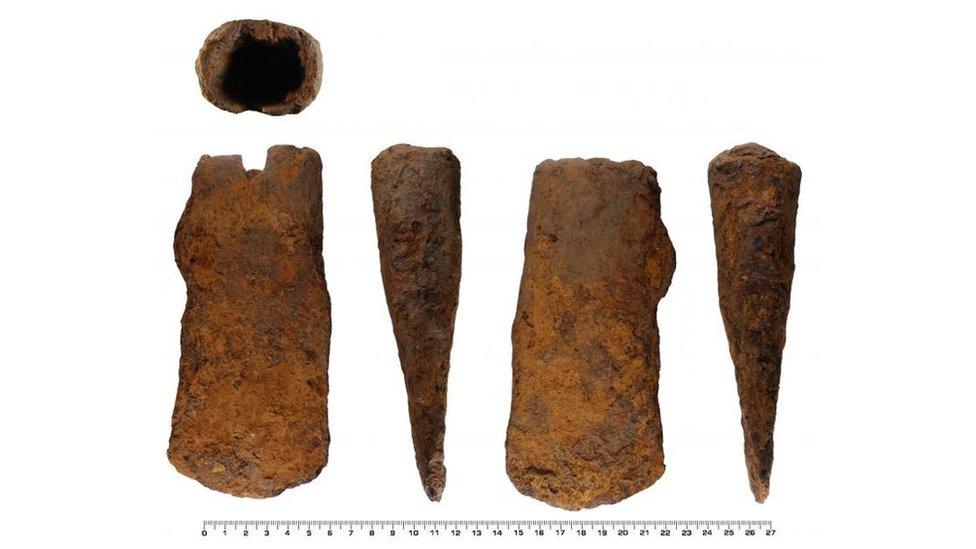
- Published23 December 2021
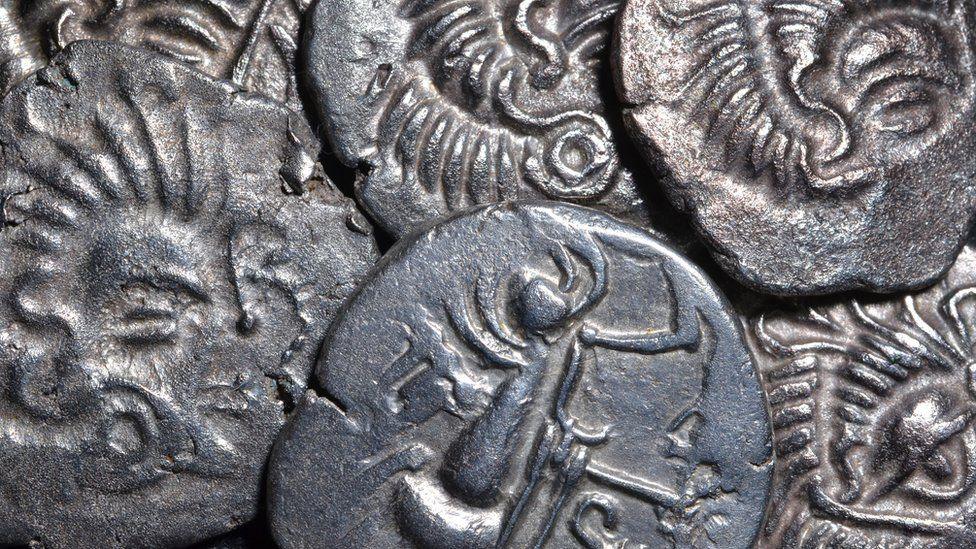
- Published29 November 2021
